
Before going into the turf industry, Muhammad Umair Tajammul was an avid golfer who wanted to better understand changing conditions at the course where he played. Photos courtesy of Muhammad Umair Tajammul
Grass is not a piece of carpet, so if the sprinklers are running midday or mowing is skipped, it’s not laziness – it’s science.
I’ll admit, I used to be that golfer. The one who walked off Riyadh Golf Club’s greens muttering “These greens have never rolled same in successive days… why can’t they ever be consistent?” Like most golfers, I thought the superintendent’s crew missed a mowing or overwatered.
Everything made more sense after I earned ASCS certification. Suddenly I could see the invisible tug-of-war between desert wind and irrigation, between paspalum and overseed, between plant health and golfer expectation. The Greens weren’t inconsistent; they were responding to seasonal weather stress.
At Riyadh Golf Club, every round is a courtroom drama – and the greens are always on trial. I used to complain about green speed, but now I am the unlikely defender for the superintendent’s side and that’s exactly where the debate begins.
Here’s a short case study from Riyadh Golf Club in Riyadh, Saudi Arabia, a course with an arid desert climate, where the seashore paspalum greens experience intense UV exposure year-round.
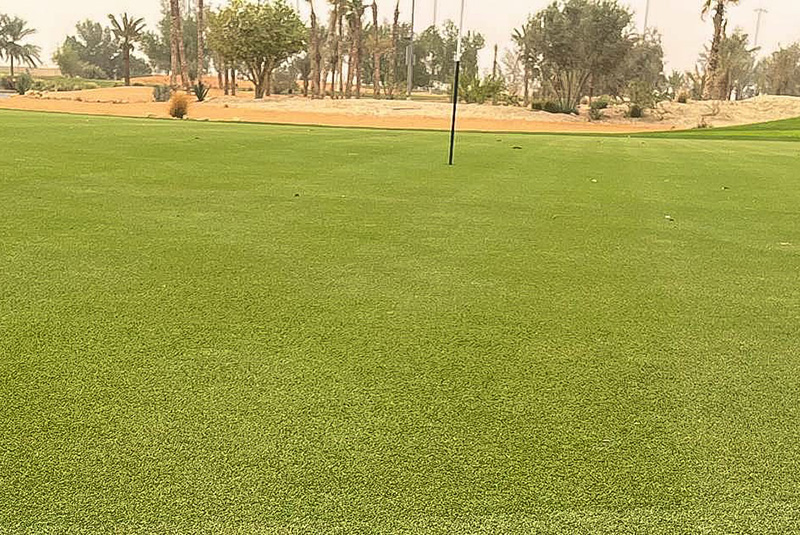

August 2025 (Stimp Read: 10.0 - 11.0). A hot windy day in Riyadh can desiccate the turf within hours.
Summer (May – August)
A golfer might say the greens are too firm and grainy, but some feel soft. A superintendent might tell you that’s desert golf! High winds and low humidity dry greens surfaces rapidly, firming them up, increasing roll. Full-sun exposed greens cause aggressive grainy leaf growth, whereas shaded greens remain soft. It’s not neglect – It’s physics.
To communicate this, we might advise golfers to test their short game finesse as we keep the greens on the drier side this time of the year to prevent disease – and yes, that means more bounce and more roll.
The upside: fewer ball marks to repair and a reason to polish your one hop stop chip!

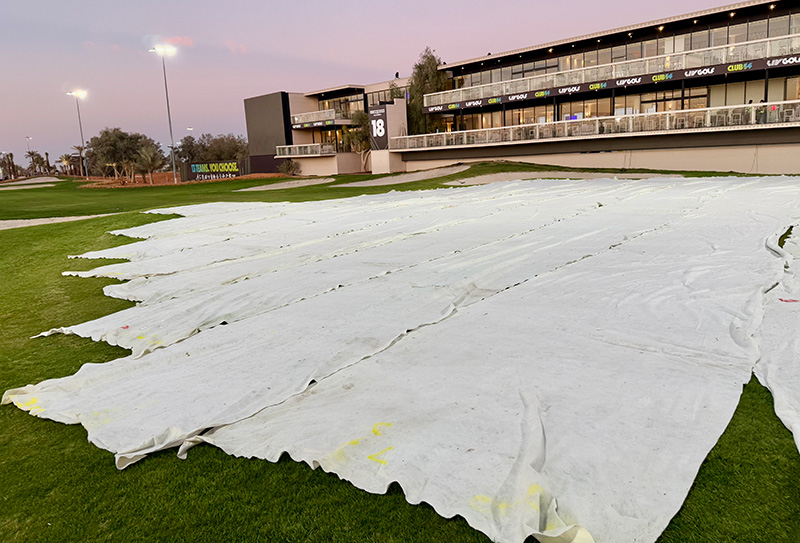
October 2024 (Stimp Read: 6.5 –7.5). High HOC, soft and slowest of the year.
Fall (Sep – Oct)
When golfers ask why the greens are slower and don’t look as good as they did last month, a superintendent might respond that the overseeding greens are going through a combination of cultural practices, including creating a niche for winter grass (Poa Trivialis). More water, higher mowing, natural chlorophyll reduction in fall and low lush growth feed to prevent disease in paspalum all mean softer, duller greens — at least temporarily. It’s the ugly-duckling stage before winter smoothness.
To communicate this to membership, the newsletter might urge patience while the greens go through their annual “makeover season.” Things might look scruffy now, but this short-term adjustment ensures that we are setting the stage for smooth and consistent roll all winter long.
The upside: Fewer three putts as golfers can be bolder with that birdie putt they left short in July, and those tricky downhill putts aren’t as intimidating!
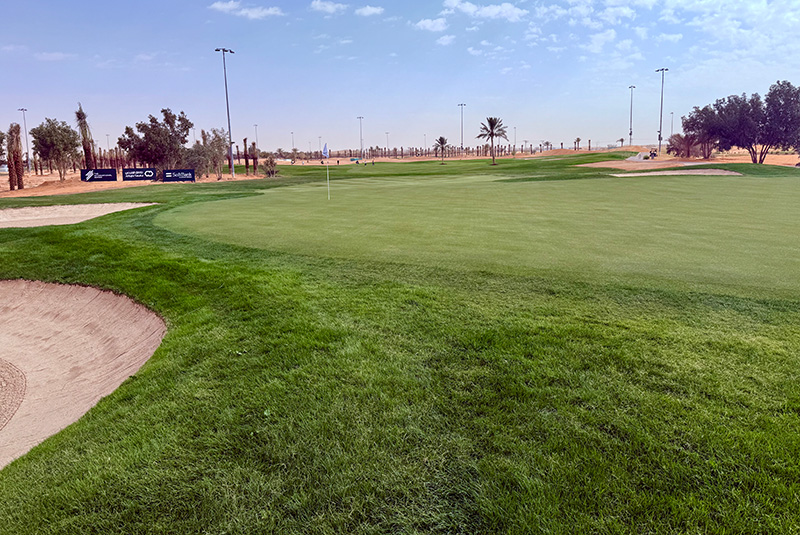
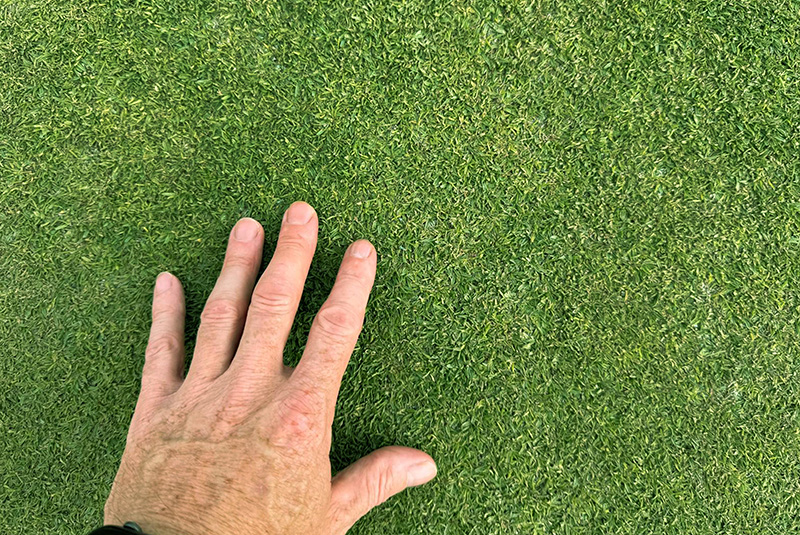
December 2024 (Stimp Read: 9.5 - 10.5). Poa Trivialis established.
Winter (November – February)
Poa Trivialis turf in winter means softer greens. Golfers may complain the ball won’t release, but that’s because Poa Trivialis’ upright growth holds more moisture, which reduces firmness. Balls may perch on the leaf rather than nestle down, especially in early mornings with dew. It leads to softer, smoother and less grainy turf than paspalum, meaning truer greens.
Superintendents might tell golfers that the cooler season’s overseeding program has resulted in a softer, smoother surface and gentler roll. Golfers can expect more “drop and stop” and less “bounce and release.”
The upside: Putts that rolled six feet past the hole will now roll only two feet past. Your 3-putt count might actually drop. A lush alternate plan for winter means golfers’ games don’t go into hibernation, and it provides an opportunity for them to hone that 50-yard low check and release shot.
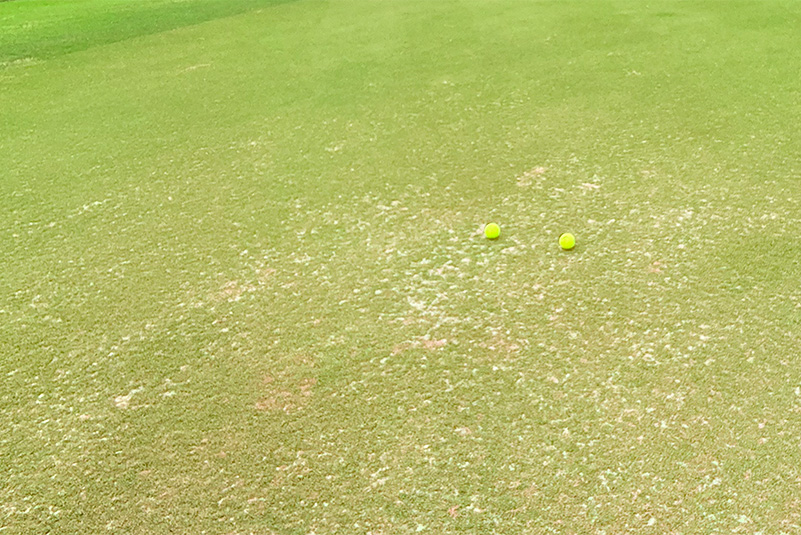
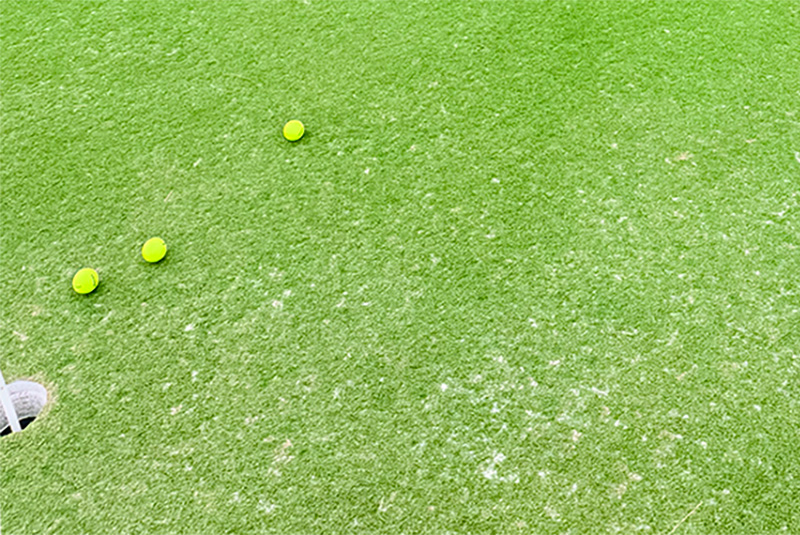
April 2025 (Stimp Read: 7.5 –8.5). Transition back from Poa Trivialis to seashore paspalum.
Spring (March – April)
Springtime transition from overseeded Poa Trivialis to seashore paspalum may lead to golfers complaining that the greens aren’t true, and that some look patchy. Superintendents know this is because neither grass is fully in charge yet. Verticutting and topdressing to eliminated winter grass and let paspalum fill in while temperatures rise mean inconsistent recovery and a slightly inconsistent roll.
This is the “awkward teenager” phase for the greens, so we might communicate to our members that if greens feel a little quirky lately, it’s just because nature is changing from winter Poa grass to paspalum returning for those lightning-fast summer conditions golfers love. For now, there will still be some “character spots” as the changeover plays out.
The upside: Time for golfers use their touch and skill on spring greens! Suggest that they use those slopes to their advantage and sink those tricky putts their buddies swear are impossible.
The Bottom Line
When I entered the profession, I learned that Riyadh greens don’t roll the same two days in a row because they are not supposed to. Honestly, that’s the fun of it! The squabbles and the back-and-forth between golfers and the golf course maintenance crew are all part of the game.
Muhammad Umair Tajammul, ASCS, is the construction superintendent at Golf Saudi in Riyadh, Saudi Arabia